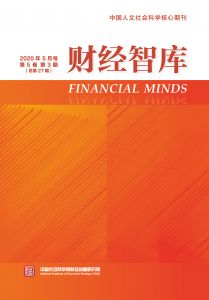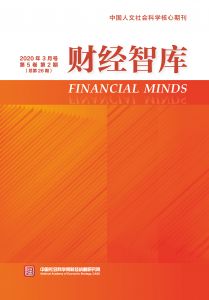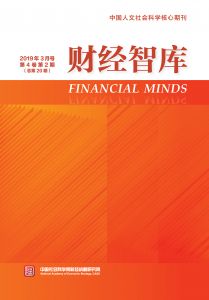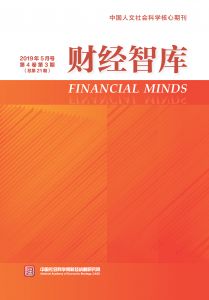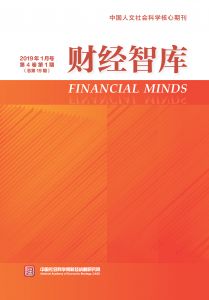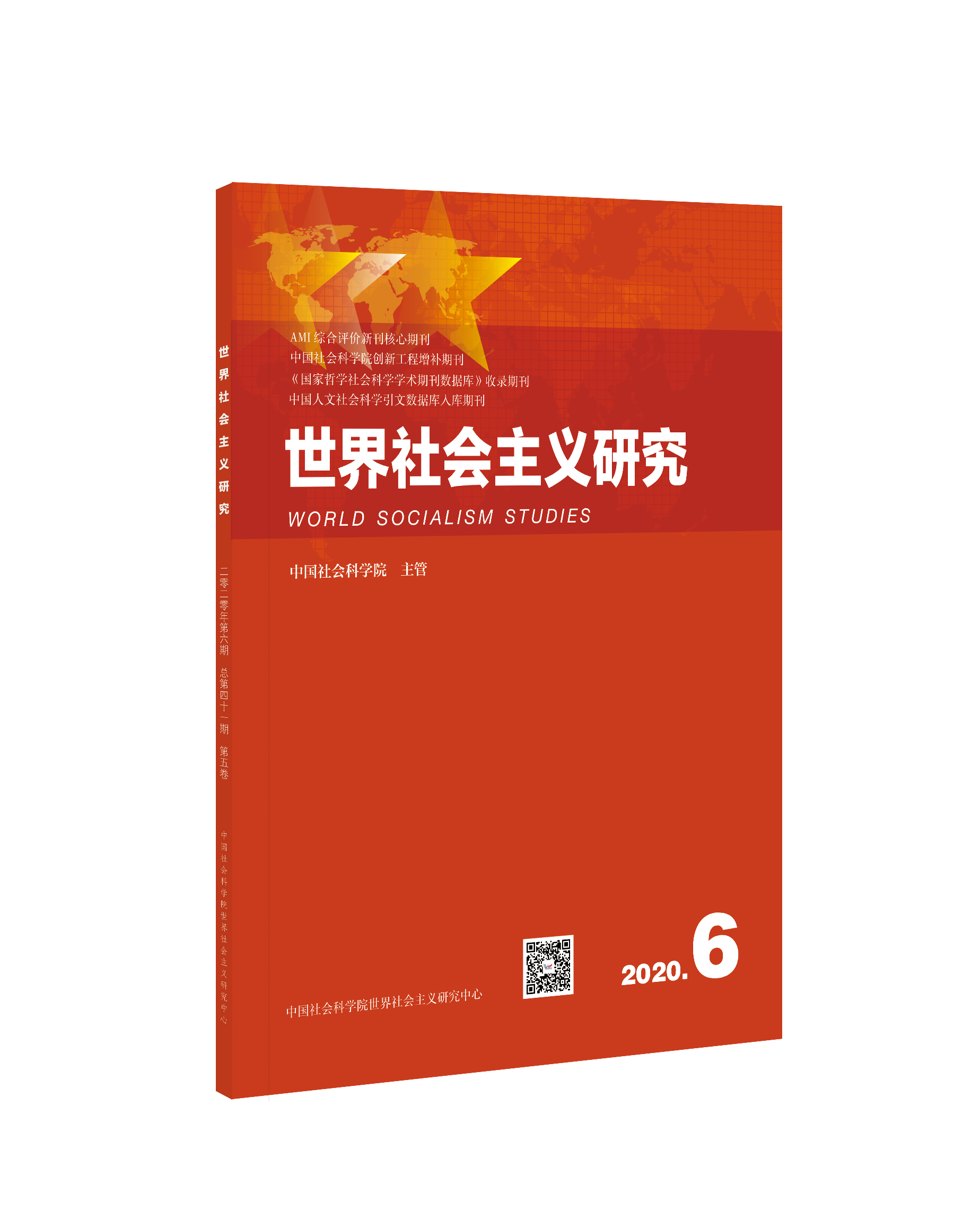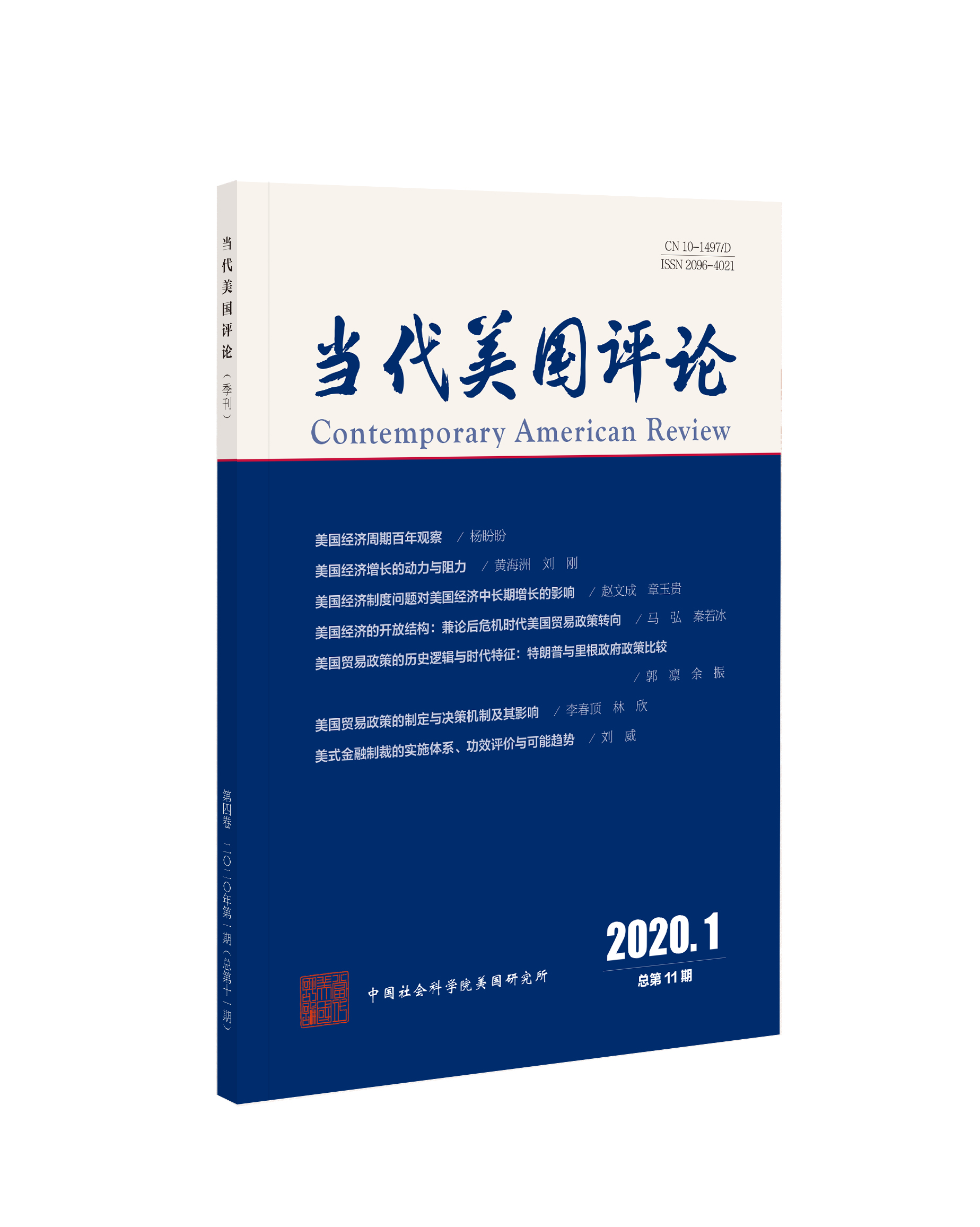最新期刊

目录
过往期刊
参考文献
-
征稿启事
-
编委会
-
中美贸易争端一二三四五
-
一、“一个中心”,即以发展中国高科技产业为中心
-
二、“两个基本点”
-
三、“三个防止”
-
四、“四个主要任务”
-
五、“五项措施”
-
-
“贸易战”的冷思考
-
一、贸易冲突不可避免,而且会长期存在
-
二、美国的政治动机大于经济动机
-
三、每次贸易冲突的结果都是中国变得更好、更强
-
四、如何应对中美贸易冲突
-
-
特朗普政府经济政策:政策梳理、效果评估与前景展望
-
一、引言
-
二、特朗普政府主要经济政策思路
-
三、特朗普国内经济政策:梳理与潜在影响评估
-
四、特朗普政府对外经济政策梳理与外溢效应分析
-
五、特朗普政府经济政策前景展望
-
-
如何科学评估经济政策的效应?
-
一、科学评估方法的基本逻辑
-
二、常见的几种评估方法和案例剖析
-
三、科学评估方法的应用前提和要点
-
-
“大数据”在宏观经济预测分析中的应用
-
一、引言
-
二、“大数据”特点及对传统宏观经济预测的互补性
-
三、“大数据”在宏观经济预测和分析中的应用
-
四、大数据宏观预测中存在的问题和解决方案
-
五、总结及展望
-
-
双重差分方法的研究动态及其在公共政策评估中的应用
-
一、引言
-
二、经典双重差分方法介绍
-
三、双重差分方法的研究进展
-
四、同其他政策评估方法的差异性比较
-
五、结论与展望
-
-
中国人口预测方法及未来人口政策
-
一、人口总量模型
-
二、队列要素人口预测模型
-
三、孩次递进人口预测
-
四、人口预测方法检验
-
五、中国人口预测
-
六、从人口模拟结果看未来人口政策
-
-
编辑部絮语0303
-
Abstracts
-
中国社会科学院财经战略研究院建院40周年院庆公告
-
版权页
按年份浏览:
- 全部
- 2020
- 2019
- 2018
- 2017
- 2016
[1][1]鞠建东:“美单边主义301调查不会改变别国同中国合作”,《金融界》,2018年4月10日。
[2][2]鞠建东:“立足全球贸易新格局思考开放战略”,《联合时报》,2017年2月10日。
[3][3]鞠建东:“贸易新常态下的全球经济治理新框架和中国对外开放战略研究”,《南京财经大学学报》,2017年4月20日。
[4][4]Du,Y.X.,Ju J.D.,Ramirez,C.D. and X.Yao,2017,Bilateral Trade and Shocks in Political Relations:Evidence from China and Some of Its Major Trading Partners,1990—2013. Journal of International Economics ,108:211-225.
[5][5]Ju,J.D and X.,Yu,2018. Reputation premium and reputationmanagement:Evidence from the largest e-commerce platform in China,China and World Economy ,26(2):23-49.
[6][6]Chinn,M. and J.D.,Ju,2015,Capital flows and the international financial System,Journal of International Money and Finance ,59:183-184.
[7][7]Ju,J.D. and X.,Yu,2015,Productivity,profitability,production and Export Structures Along the Value Chain in China,Journal of Comparative Economics ,43(1):33-54.
[8][8]Ju,J.D. and M.,Yu,2014,Introduction to the Special Issue on China’s Growing Trade and Trans-Pacific Trade Agreements,European Journal of Marketing ,7(2):165-167.
[9][9]Ju,J.D.,Shi K. and S.J.,Wei,2014,On the Connections between Intra-temporal and Intertemporal Trades,Journal of International Economics ,92:S36-S51.
[10][10]马弘、滕越、徐嫄:“中美贸易摩擦升级战略思考—基于日本经验的视角”,《国际贸易》2017年3月。
[11][11]马弘、李小帆:“服务贸易开放与出口附加值”,《国际经济研究》2018年第2期。
[12][12]崔凡:“中国对外资的壁垒到底有多高?”,《国际经贸在线》。
[13][13]陆晓明:“特朗普政策效果预期——从与里根经济政策比较的视角”,《国际金融》2017年第6期。
[14][14]李向阳:“特朗普经济政策评估”,《国际经济评论》2017年第4期。
[15][15]朱民:“特朗普的冲击:经济政策及全球影响”,《债券》2017年第4期。
[16][16]郝宇彪:“特朗普时期美国对外贸易政策:理念、措施及影响”,《深圳大学学报(人文社会科学版)》2017年第2期。
[17][17]张明、刘瑶:“特朗普政府经济政策:政策梳理与影响评估”,《世界经济黄皮书:2018年世界经济形势分析与预测》,社会科学文献出版社2018年。
[18][18]范子英、李欣:“部长的政治关联效应与财政转移支付分配”,《经济研究》2014年第6期。
[19][19]刘甲炎、范子英:“中国房产税试点的效果评估:基于合成控制法的研究”,《世界经济》2013年第11期。
[20][20]Angrist,J.D. and Pischke,Jörn-Steffen,2009,Mostly Harmless Econometrics,Princeton University Press.
[21][21]Chen,Y.Y.,Ebenstein,A.,Greenstone,M. and H.B.,Li,2013,Evidence on the Impact of Sustained Exposure to Air Pollution on Life Expectancy from China’s Huai River Policy,Proceedings of the National Academy of Sciences ,110(32):12936-12941.
[22][22]董倩、孙娜娜、李伟:“基于网络搜索数据的房地产价格预测”,《统计研究》2014年第10期。
[23][23]洪涛、厉伟:“基于网络搜索数据的住房价格预期与实际价格波动分析”,《统计与信息论坛》2015年第11期。
[24][24]霍琳、尚维、徐山鹰:“房地产开源舆情指数构建与政策影响研究”,《信息系统学报》2014年第1期。
[25][25]李春红、吴英、覃朝勇:“基于LASSO变量选择方法的网络广告点击率预测模型研究”,《数理统计与管理》2016年第5期。
[26][26]孙毅、吕本富、陈航等:“大数据视角的通胀预期测度与应用研究”,《管理世界》2014年第4期。
[27][27]孙少岩、逯家英、王化波:“基于ARIMA模型对吉林省失地人口的研究”,《人口学刊》2014年第4期。
[28][28]喻国明:“当前社会舆情的结构性特点与分析性发现——基于2014年中国社会网络舆情的大数据分析”,《江淮论坛》2015年第5期。
[29][29]喻国明:“大数据分析下的中国社会舆情:总体态势与结构性特征——基于百度热搜词(2009—2012年)的舆情模型构建”,《中国人民大学学报》2013年第5期。
[30][30]袁铭:“基于网购搜索量的CPI及时预测模型”,《统计与信息论坛》2015年第4期。
[31][31]汪同三、张涛:《组合预测:理论、方法及应用》社会科学文献出版社2008年。
[32][32]王勇、董恒新:“大数据背景下中国季度失业率的预测研究——基于网络搜索数据的分析”,《系统科学与数学》2017年第2期。
[33][33]徐映梅、高一铭:“基于互联网大数据的CPI舆情指数构建与应用——以百度指数为例”,《数量经济技术经济研究》2017年第1期。
[34][34]徐宗本、张维、刘雷等:“数据科学与大数据的科学原理及发展前景”——香山科学会议第462次学术讨论会专家发言摘登香山科学会议第一次学术讨论会专家发言摘登”,《科技促进发展》2014年第1期。
[35][35]张崇、吕本富、彭赓等:“网络搜索数据与CPI的相关性研究”,《管理科学学报》2012年第7期。
[36][36]Askitas,N. and K.F.,Zimmermann,2009,Google Econometrics and Unemployment Forecasting,Discussion Papers of Diw Berlin ,55:107-120.
[37][37]Barreira,N. and P. Godinho,2013,Nowcasting unemployment rate and New Car Sales in south-western Europe with Google Trends,Netnomics ,14(3):129-165.
[38][38]Bermingham,A. and A.F.,Smeaton,2011,On Using Twitter to Monitor Political Sentiment and Predict Election Results,In Proceeding of IJCNLP conference,Chian Mai,Thailand.
[39][39]Cavallo,A. and R.,Rigobon,2016,The Billion Prices Project:Using Online Prices for Measurement andResearch,Journal of Economic Perspectives ,30(2):151-178.
[40][40]Choi,H. and H.,Varian,2012,Predicting the Present with Google Trends,Social Science Electronic Publishing ,88(s1):2-9.
[41][41]D’Amuri and Francesco,2009,“Predicting unemployment in short samples with internet job search query data”,MPRA Paper 18403,University Library of Munich,Germany.
[42][42]Elsner,J. B. and A.,Tsonis,1996,“Singular Spectrum Analysis:A New Tool in Time Series Analysis”,Springer Berlin ,1283(4):932-942.
[43][43]Ettredge,M.,Gerdes,J.,and G.,Karuga,2005,“Using web-based search data to predict macroeconomic statistics”,Communications of the ACM48(11):87-92.
[44][44]Fatta,G. D.,et al,2015,“Big Social Data and Political Sentiment:The Tweet Stream during the UK General Election 2015 Campaign”,IEEE International Conference on Smart City/socialcom/sustaincom. IEEE 2016:293-298.
[45][45]Götz,T. B. and T.,Knetsch,2017,“Google Data in Bridge Equation Models for German GDP”,Discussion Papers.
[46][46]Jahanbakhsh,K. and Y.,Moon,2014,“The Predictive Power of Social Media:On the Predictability of U.S. Presidential Elections using Twitter”,Computer Science.
[47][47]Kholodilin,K. A.,Podstawski,M.,Siliverstovs,B. and C.R.,Salomobürgi,2009,“Google Searches as a Means of Improving the Nowcasts of Key Macroeconomic Variables”,Discussion Papers of Diw Berlin.
[48][48]Kulkarni,R.,Haynes,K.E.,Stough,R.R. and Paelinck,J.H.P.,2010,“Forecasting Housing Prices with Google Econometrics”,Social Science Electronic Publishing.
[49][49]Manyika,J.,et.al.,2011,“Big data:The Next Frontier for Innovation,Competition,Andproductivity”,Analytics.
[50][50]McDonald,R. and X.,Mao,2015,“Forecasting the 2015 General Election with Internet Big Data:An Application of the TRUST Framework”,Working Papers.
[51][51]Guzman,G.,2011,“Internet Search Behavior as an Economic Forecasting tool:The Case of Inflation Expectations”,Journal of Economic and Social Measurement,36(3):119-167.
[52][52]Mclaren,N. and R.,Shanbhogue,2011,“Using Internet Search Data as Economic Indicators” Bank of England Quarterly Bulletin,51(2):134-140.
[53][53]Müller,R.,et al.,2006,“Recent Developments in the Swiss CPI:Scanner data,Telecommunications and Health Price Collection”,9th Ottawa Group Meeting on Prices 14th to16th May,London.
[54][54]Myung,N. K.,2009,“Singular Spectrum Analysis”,Springer Berlin,1283(4):932-942.
[55][55]Pavlicek,J. and L.,Kristoufek,2014,“Can Google Searches Help Nowcast and Forecast Unemployment Rates in the Visegrad Group Countries?”,Papers.
[56][56]Pavlicek,J. and L.,Kristoufek,2015,“Nowcasting Unemployment Rates with Google Searches:Evidence from the Visegrad Group Countries”,Plos One 10(5):e0127084.
[57][57]Penna,N. D. and H.,Huang,2009,“Constructing Consumer Sentiment Index for U.S. Using Google Searches”,Working Papers.
[58][58]Tibshirani,R.,1996,“Regression shrinkage and selection via the Lasso. Journal of the Royal Statistical Society”,Series B,58(1):267-288.
[59][59]Vosen,S. and T.,Schmidt,2010,“A Monthly Consumption indicator for Germany based on Internet search query data”,Applied Economics Letters,19(7):683-687.
[60][60]Suhoy,T.,2010,Monthly Assessments of Private Consumption,Research Department,Bank of Israel.
[61][61]Su,Z.,2014,“Chinese Online Unemployment-related Searches and Macroeconomic Indicators”,Frontiers of Economics in China,9(4):573-605.
[62][62]Webb,G. K.,2009,“Internet Search Statistics as a Source of Business Intelligence:Searches on Foreclosure as an Estimate of Actual Home Foreclosures”,Issues in Information Systems,10(2).
[63][63]Widgrén,and Joona,2016,“Predicting housing prices with Google searches in Finland”,Etla Reports.
[64][64]Wu,L. and E.,Brynjolfsson,2009,The Future of Prediction:How Google Searches Foreshadow Housing Prices and Sales,Social Science Electronic Publishing.
[65][65]陈林、伍海军:“国内双重差分法的研究现状与潜在问题”,《数量经济技术经济研究》2015年第7期。
[66][66]范子英、彭飞:“营改增”的减税效应和分工效应:基于产业互联的视角”,《经济研究》2017年第2期。
[67][67]胡一帆、宋敏、张俊喜:“中国国有企业民营化绩效研究”,《经济研究》2006年第7期。
[68][68]刘小玄、朱克朋:“国有企业效率与退出选择——基于部分竞争性行业的经验研究”,《经济评论》2012年第3期。
[69][69]刘晔、张训常、蓝晓燕:“国有企业混合所有制改革对全要素生产率的影响——基于PSM-DID方法的实证研究”,《财政研究》2016年第10期。
[70][70]刘晔、张训常:“碳排放交易制度与企业研发创新——基于三重差分模型的实证研究”,《经济科学》2017年第3期。
[71][71]彭飞、范子英:“税收优惠、捐赠成本与企业捐赠”,《世界经济》2016年第7期。
[72][72]石华军、楚尔鸣:“政策效果评估的双重差分方法”,《统计与决策》2017年第17期。
[73][73]汪伟、艾春荣、曹晖:“税费改革对农村居民消费的影响研究”,《管理世界》2013年第1期。
[74][74]王鑫、吴斌珍:“个人所得税起征点变化对居民消费的影响”,《世界经济》2011年第8期。
[75][75]项后军、何康、于洋:“自贸区设立、贸易发展与资本流动——基于上海自贸区的研究”,《金融研究》2016年第10期。
[76][76]赵西亮:《基本有用的计量经济学》,北京大学出版社,2017年。
[77][77]Abadie,A.,Diamond,A. and J.,Hainmueller,2010,Synthetic Control Methods for Comparative Case Studies:Estimating the Effect of California’s Tobacco Control Program,Journal of the American Statistical Association ,105(490):493-505.
[78][78]Abadie,A. and J.,Gardeazabal,2003,The Economic Costs of Conflict:A Case Study of the Basque Country,The American Economic Review ,93(1):113-132.
[79][79]Ai,C. and E.C.,Norton,2003,Interaction Terms in Logit and Probit Models. Economics Letters ,80(1):123-129.
[80][80]Angelucci,M. and V.D.,Maro,2010,Program Evaluation and Spillover Effects. Inter-American Development Bank.
[81][81]Angrist,J.D. and M.,Rokkanen,2015,Wanna Get Away? Regression Discontinuity Estimation of Exam School Effects Away From the Cutoff. Journal of the American Statistical Association ,110(512):1331-1344.
[82][82]Ashenfelter O.,1978,Estimating the Effect of Training Programs on Earning,The Review of Econoics and Statistics ,60(1):47-57.
[83][83]Athey,S. and G.W.,Imbens,2006,Identification and Inference in Nonlinear Difference-in-Differences Models. Econometrica ,74(2):431-497.
[84][84]Basu,D.,1980,Randomization Analysis of Experimental Data:The Fisher Randomization Test. Publications of the American Statistical Association ,75(371):575-582.
[85][85]Bloom,H.S.,1984,Estimating the Effect of Job-Training Programs,Using Longitudinal Data:Ashenfelter’s Findings Reconsidered. Journal of Human Resources ,19(4):544-556.
[86][86]Blundell,R. and M.C.,Dias,2002,Alternative Approaches to Evaluation in Empirical Microeconomics. Portuguese Economic Journal ,1(2):91-115.
[87][87]Bonhomme,S. and U.,Sauder,2011,Recovering Distributions in Difference-in-Differences Models:A Comparison of Selective and Comprehensive Schooling. Review of Economics and Statistics ,93(2):479-494.
[88][88]Bronzini,R. and P.,Piselli,2016,The impact of R&D Subsidies on Firm Innovation. Research Policy ,45(2):442-457.
[89][89]Callaway,B. and T.,Li,2017,Quantile Treatment Effects in Difference in Differences Models with Panel Data,Detu Working Papers.
[90][90]Chabé-Ferretab,S.,2013,How Much Green for the Buck? Estimating Additional and Windfall Effects of French Agro-environmental Schemes by DID-matching. Journal of Environmental Economics & Management ,65(1):12-27.
[91][91]Cheng,H.,Ching,H.S. and S.K.,Wan,2012,A Panel Data Approach for Program Evaluation:Measuring the Benefits of Political and Economic Integration of HongKong with Mainland China. Journal of Applied Econometrics ,27(5):705-740.
[92][92]Courtemanche,C.J and D.,Zapata,2014,Does Universal Coverage Improve Health? The Massachusetts Experience. Journal of policy analysis and management ,33(1):36-69.
[93][93]D’Haultfoeuille,X.,Hoderlein,S. and Y.,Sasaki,2013,Nonlinear Difference-in-Dfferences in Repeated Cross Sections With Continuous Treatments,Centre for Microdata Methods and Practice,Institute for Fiscal Studies.
[94][94]Doudchenko N. and G.W.,Imbens,2016,Balancing,Regression,Difference-In-Differences and Synthetic Control Methods:A Synthesis. Nber Working Papers.
[95][95]Fan,Y. and Z.,Yu,2012,Partial Identification of Distributional and Quantile Treatment Eeffects in Difference-in-Differences Models. Economics Letters ,115(3):511-515.
[96][96]Heckman,J.J.,Smith,J. and N.,Clements,1997,Making The Most Out of Programme Evaluations and Social Experiments:Accounting For Heterogeneity in Programme Impacts. Review of Economic Studies ,64(4):487-535.
[97][97]Hirano,K.,Imbens,G.W and G.,Ridder,2003,Efficient Estimation of Average Treatment Effects Using the Estimated Propensity Score,Econometrica ,71(4):1161-1189.
[98][98]Huynh,K.P.,Jachochávez,D.T. and M.C.,Voia,2011,Nonlinear Difference-in-Difference Treatment Effect Estimation:A Distributional Analysis,Social Science Electronic Publishing ,27:247-268.
[99][99]Imbens,G.W. and J.M.,Wooldridge,2009,Recent Developments in the Econometrics of Program Evaluation,Journal of Economic Literature ,47(1):5-86.
[100][100]Khandker,S.,Koolwal,G.B. and H.,Samad,2010,Handbook on Impact Evaluation.WorldBank.
[101][101]Lechner,M.,2010,The Estimation of Causal Effects by Difference-in-Difference Methods. University of St Gallen Department of Economics Working Paper,4(3):165-224.
[102][102]Lucas,A.M. and I.M.,Mbiti,2012,Access,Sorting,and Achievement:The Short-Run Effects of Free Primary Education in Kenya. American Economic Journal Applied Economics ,4(4):226-253.
[103][103]Marí-Dell’Olmo M.,2010,Handbook on Impact Evaluation:Quantitative Methods and Practices. World Bank Publications ,25(5):441-441.
[104][104]Mcintosh C.,2008,Estimating Treatment Effects from Spatial Policy Experiments:An Application to Ugandan Microfinance,The Review of Economics and Statistics ,90(1):15-28.
[105][105]Meyer,B.D.,Viscusi,W.K. and D.L.,Durbin,1995,Workers’ Compensation and Injury Duration:Evidence from a Natural Experiment. The American economic review ,85(3):322-340.
[106][106]Puhani,P.A.,2012,The Treatment Effect,the Cross Difference,and the Interaction Term in Nonlinear “Difference-in-Differences” Models. Social Science Electronic Publishing ,115(1):85-87.
[107][107]Rosenbaum,P.R. and D.B.,Rubin,1983,The Central Role of the Propoensity Score in Observational Studies for Causal Effects. Biometrika ,70(1):41-55.
[108][108]Rubin,D.B.,1986,Comment:Which Ifs Have Causal Answers. Journal of the American Statistical Association ,81(396):961-962.
[109][109]Rubin,D.B.,1980,Discussion of Randomization Analysis of Experimental Data:The Fisher Randomization Test. Journal of the American Statistical Association,75(371):591-593.
[110][110]Schwartz S.,Gatto,N.M and U.B.,Campbell,2012,Extending the Sufficient Component Cause Model to Describe the Stable Unit Treatment Value Assumption (SUTVA). Epidemiologic Perspectives & Innovations Ep+i ,9(1):1-11.
[111][111]Thistlethwaite,D.L. and D.T.,Campbell,1960,Regression-discontinuity Analysis:An Alternative to The Ex Post Facto Experiment. Journal of Educational Psychology ,51(6):309-317.
[112][112]Viet,C.N.,2008,Impact Evaluation of Multiple Overlapping Programs using Difference-in-differences with Matching,Mpra Paper.
[113][113]郭志刚:“关于生育政策调整的人口模拟方法探讨”,《中国人口科学》2004年第2期。
[114][114]路磊:“已知死亡水平和死亡模式时的生命表编制”,翟振武主编,《人口数据分析方法及其应用》,外文出版社1992年。
[115][115]马灜通:《数理统计分析人口学》,中国人口出版社2010年。
[116][116]张丽萍、王广州:“育龄人群二孩生育意愿与生育计划”,《人口与经济》2015年第6期。
[117][117]王广州:“中国低生育水平下的二孩生育意愿研究”,《青年探索》2017年第5期。
[118][118]王军、王广州:“中国低生育水平下的二孩生育意愿与生育行为差异研究”,《人口学刊》2016年第2期。
[119][119]Preston,S.H.,Heuveline,P. and M. Guillot,2001,Demography-Measuring and Modeling Population Processes,Blackwell Publishers Ltd 2001.
[120][120]David,P. S.,1992,Formal Demography,Plenum Press.
[121][121]Siege,l J.S and D.A.,Swanson,2004,The Methods and Materials of Demography(Second Edittion),Elsevier Academic Press.
[展开]
相关推荐
手机可扫码阅读


